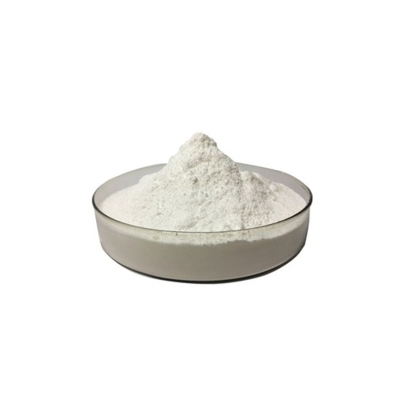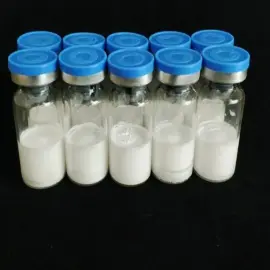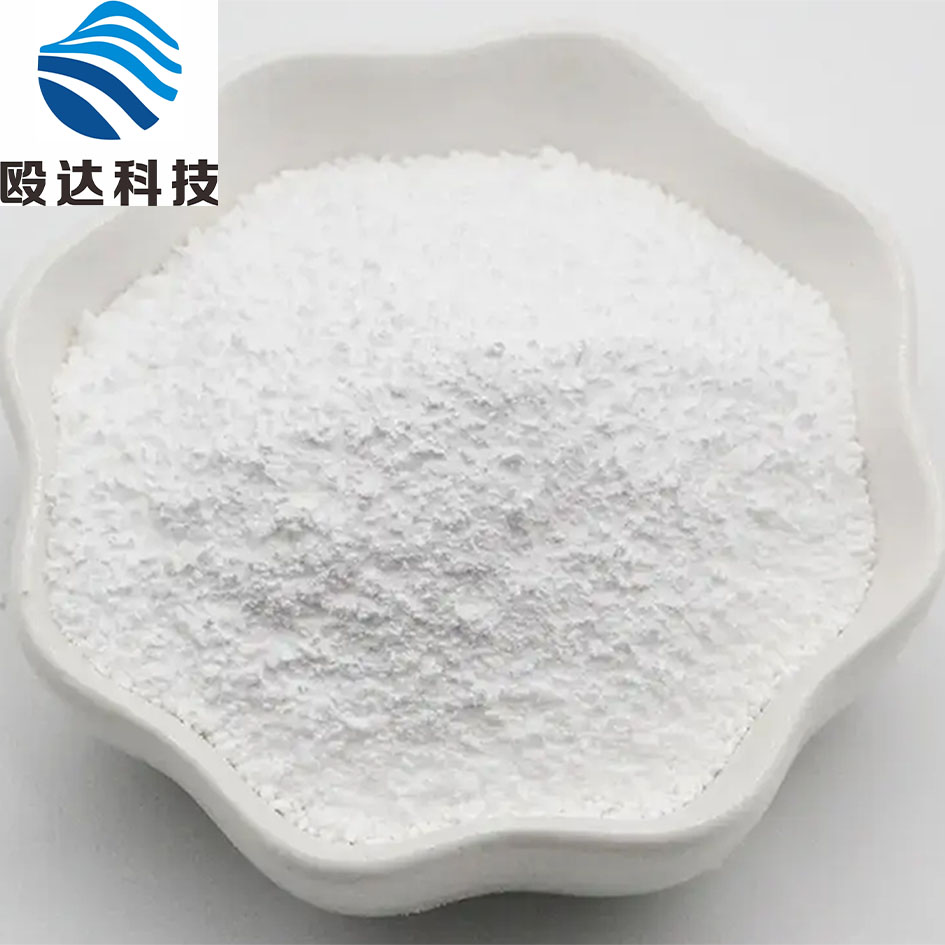-
Categories
-
Pharmaceutical Intermediates
-
Active Pharmaceutical Ingredients
-
Food Additives
- Industrial Coatings
- Agrochemicals
- Dyes and Pigments
- Surfactant
- Flavors and Fragrances
- Chemical Reagents
- Catalyst and Auxiliary
- Natural Products
- Inorganic Chemistry
-
Organic Chemistry
-
Biochemical Engineering
- Analytical Chemistry
- Cosmetic Ingredient
-
Pharmaceutical Intermediates
Promotion
ECHEMI Mall
Wholesale
Weekly Price
Exhibition
News
-
Trade Service
The bursting of the innovative drug bubble will be late, but it will not be absent
.
"The four-year-old biotech, the tumor field, is said to be closing down
.
" One day at the end of March, this sentence in the circle of friends stabbed many people's eyes like piercing the window paper
.
According to the recollection of a new drug founder, probably since the IPO of Hong Kong stock market 18A broke, the investment institutions that used to flock here have come to the door less frequently
.
He said goodbye to a multinational pharmaceutical company he had served for many years a few years ago and founded an innovative drug company
.
An investor who has long been engaged in early-stage investment in innovative drugs also proved this to Arterial
.
This year, a large number of innovative drug projects that he laid out earlier have entered the C and D rounds of financing
.
It seems that China's innovative drugs have reached the most dangerous time, but is this really the case?
Who cools down the investment in innovative drugs?
Who cools down the investment in innovative drugs? Like the bosses of innovative pharmaceutical companies who feel the cold winter is approaching, there are also professional investors who specialize in innovative drugs
.
Because behind them, the investment committee is still standing
.
As the highest decision-making body of a venture capital institution, the investment committee is usually responsible for deciding the institution's capital plan, investment strategy, investment principles, investment objectives, asset allocation and the overall plan of the investment portfolio
.
A vertical media once interpreted venture capital in this way: The reason why VC can form a business model is that the top layer is poor cognition, the middle is poor information, and then it is the embodiment of the ability to raise funds, sourcing, and post-investment details
.
Compared with the specific analysis dimensions such as the innovation of the technology path and the popularity of the target, the investment committee will consider the competitiveness of the project to be invested in subsequent transactions
.
In other words, it is difficult for technologies that are not favored in the secondary market to pass the investment committee
.
In April 2018, the Hong Kong Stock Exchange revised the main board listing rules, adding Chapter 18A "Biotechnology Companies" ("18A"), allowing biotechnology companies with no revenue or profit to submit listing applications
.
More than a year later, the Science and Technology Innovation Board opened, and the fifth set of listing regulations coincided with 18A, which both led to the listing and financing of innovative drug projects
.
For example, the Hong Kong Stock Exchange pointed out in the first issue of "Hong Kong Stock Exchange and Biotechnology" in 2021 that although the capital market has experienced substantial fluctuations due to the impact of the new crown epidemic, the listing of the medical and health sector of the Hong Kong Stock Exchange has shown strong resilience, and attracted market attention
.
For the full year of 2020, the Hang Seng Hong Kong-listed Biotech Index (49.
5%) outperformed the Hang Seng Index (-3.
But freshness is not enough to sustain a sustained boom
.
By the second half of 2021, people will shake their heads when they mention the innovative drug listed companies in the fifth set of 18A and the Science and Technology Innovation Board
.
These fledgling public companies have low stock liquidity
.
Taking December 27, 2021 as an example, there were 29 biotech companies with a "B" suffix with a turnover of less than HK$10 million, of which 11 had a turnover of less than HK$1 million
.
Innovative drug companies in the later stages are forced to choose to go public at a discount
.
In February 2022, Lepu Bio’s IPO price per share was set at HK$7.
13, equivalent to RMB 5.
78, which was lower than the price per share of RMB 6.
7 during the C round of financing less than a year ago
.
Behind this, Lepu Bio has to use a discounted listing to alleviate the urgent need for insufficient funds
.
Although this is the first time that 18A has been priced below the cost of Series C financing in four years, many IPOs in the past six months have already caused pre-IPO investment institutions to lose money and ring the bell, while more innovative pharmaceutical companies have seen their stock prices plummet and fall back.
The value of Series B, or even Series A financing
.
"Funding in the primary market is actually highly related to the secondary market.
The influence is now being transmitted very quickly, and the market is very cold now
.
" Another investor told Arterial.
com, "Everyone is not sure about everything, much like the beginning of 2020.
We are worried about whether there will be an economic crisis and how international policies will change, so everyone is relatively cautious
.
” On the contrary, those projects that are still far from the secondary market, such as synthetic biology, exosomes, gene therapy, regenerative medicine, etc.
, It is easier to be approved by the investment committee
.
The underlying logic of innovative drug investment changes track
The underlying logic of innovative drug investment changes track Investment is easy to get stuck in the final decision of the investment committee and hit a wall, and smart investment managers will naturally see fewer innovative drug projects
.
"Investors calm down very quickly.
Maybe when a pot of cold water comes down, everyone will calm down, but when a news comes up, everyone will go crazy again.
This is the characteristic of investment
.
" After calming down, the investor admitted that if the company did not clarify commercialization expectations, it will be difficult to obtain financing
.
In fact, as the investment boom in innovative drugs ebbs, more investors are rethinking the methodology suitable for investment in innovative drugs in China
.
Most of them told Arterial Network that so far, the first half of innovative drug investment has ended, and the second half is starting
.
"This is the normal law of industry and investment development.
Only after a complete cycle can China's innovative pharmaceutical companies and investors be professional and mature enough,
" said Song Gaoguang, partner of Northern Light Ventures
.
In fact, in the early interviews, many investors mentioned to Arterial.
com that in the short term, domestic innovative drugs will enter a period of pain, and some companies without differentiation and strong clinical strength may be on the verge of bankruptcy
.
The current facts have actually verified the original judgment, but under the interlude of the new crown epidemic and the vigorous development of biomedicine in various places, the timing of this process has been delayed and the degree has become more intense
.
In the second half, the investment decision of innovative drugs will be based on a more comprehensive and three-dimensional cognition of the project value
.
For example, once a product of an innovative drug project entered clinical trials in the past, it would obtain a valuation of more than 1 billion yuan, and if it was advanced to phase II clinical trials, the valuation would at least double
.
Under the huge aura that speed is king, the observation of clinical data itself is not so important
.
As the end of the R&D phase approaches, the pace of product approval and commercialization risks are given greater weight
.
Really valuable innovative drugs, at least in head-to-head experiments with existing drugs, have shown substantial improvements in efficacy and safety, and have clear clinical advantages and underlying technical barriers
.
Some investors told Arterial.
com that many institutions will only continue to support innovative drug projects in their asset portfolios, and will basically not invest money in unfamiliar projects.
They need to fully grasp the technology, team, and market of an innovative drug project.
details
.
In the first half, investment in innovative drugs is a bit like a blind man touching an elephant, and he often makes a fork when he touches a point
.
For example, in 2016-2017, when PD-1 investment was very popular, investment institutions searched for similar projects almost in a blanket manner, and could make investment judgments based on the single factor that the founding team had relevant industrial experience
.
The investment logic of innovative drugs in the first half is rapid follow-up innovation
.
Search for innovative drugs with outstanding clinical value and solve major diseases (such as tumors) on a global scale.
Before the patent expires, we can bypass restrictions through small improvements and quickly copy blockbuster drugs to China
.
This process gave birth to the VIC new drug research and development model of capital + CRO + scientists
.
At that time, the top talents of multinational pharmaceutical companies went to the sea to start businesses, and investment institutions intervened at a very early stage to promote the progress of new drug research and development, and then attracted more funds to further push the company forward and the valuation to rise
.
The VIC model has achieved the most important companies in the first half of China's innovative drugs, such as BeiGene, Zai Lab, etc.
It has also changed the fate of many critically ill terminally ill patients
.
In the past, most of the effective new drugs for the late stage of severe disease were developed by foreign pharmaceutical companies and listed in foreign markets, and they would not be introduced to China until at least 7-8 years
.
During the waiting time, only a small number of qualified patients got new drugs through gray channels, but there were many chaos
.
VIC innovative pharmaceutical companies have shortened the waiting time for these life-saving drugs to 1-2 years, and they will enter the medicine soon after they are launched, which are effective and accessible, such as PD-1, which is moving forward with positive and negative weight
.
But in the later stages, the VIC pattern is gradually distorted
.
Sometimes, R&D has not made a real breakthrough, but the valuation has risen a lot
.
More importantly, compared with industry elites waiting to establish innovative pharmaceutical companies and institutions waiting to invest in innovative drugs, the number of new drugs that can be imitated is too small, resulting in a lot of research and development
.
When a product is still a long way from commercialization, rivals have already flocked to compete for limited clinical resources and sales channels.
These operational capabilities are precisely the shortcomings of VIC model entrepreneurs.
The thinking of new drug research and development must be changed.
.
Therefore, today's cold field of innovative drug investment is actually a linking process
.
Perhaps more important than predicting the future is finding a way to survive
.
If you don't lower the valuation, you can only wait to die?
If you don't lower the valuation, you can only wait to die? It is not easy for innovative pharmaceutical companies to hold on
.
In fact, before this, people would not think much about the survival of innovative pharmaceutical companies
.
In the past 10 years, the creation or investment of innovative drug companies has only been successful or more successful, and almost no failure
.
"This situation is problematic.
China's innovative drug industry has to experience life and death before it understands the choice
.
" Song Gaoguang said
.
Chinese innovative pharmaceutical companies that have not established risk awareness must deal with two major crises when risks come
.
The first is a cash flow crisis
.
Before the products are launched, most innovative pharmaceutical companies have very limited sources of cash flow, which can only be achieved by providing professional technical support and external authorization pipelines
.
But under the crisis, neither of these two paths is a good enough choice
.
The former is limited by technical platforms and personnel carrying capacity, and it is difficult to achieve scale, while the latter can only be achieved by a few innovative pharmaceutical companies with strong R&D capabilities
.
For example, we can usually read other business income descriptions about technology output in the prospectus of innovative pharmaceutical companies, but the funds range from hundreds of thousands to millions.
In the face of hundreds of millions of investment in R&D pipelines, only A drop in the bucket
.
However, there are very few large-scale external authorizations that really belong to Chinese new drug start-ups
.
Previously, the US$2.
6 billion order of Rongchang Bio’s new ADC drug Vidicitumab to authorize Seattle Gene excited the domestic innovative drug industry, but even for a domestic ADC leader like Rongchang Bio, such authorization transactions are not common
.
In addition, Qinhao Pharma awarded the rights to develop and commercialize the SHP2 inhibitor GH21 outside of China to Huya Bio International for US$282 million, Villizhibo to license the global R&D and production of anti-LAG-3 antibody LBL-007, and China Overseas exclusive commercialization rights are rare among start-up new drug companies
.
The importance of external financing for innovative pharmaceutical companies is self-evident, and lowering the valuation in exchange for cash flow seems to be their only way out
.
But despite the tight financing, valuation levels have not declined significantly
.
"The liquidity of the primary market is relatively poor, so discounting is not the norm at present, but the impact of the valuation of most projects has risen sharply, which is almost realistic, and the rate of increase is basically controlled within 1 times
.
" An investor told Arterial.
com
.
Therefore, it is necessary for innovative pharmaceutical companies to do a good job in the management of shareholders' expectations, because whether or not to reduce the valuation largely does not depend on the innovative pharmaceutical companies themselves
.
Although there were too many expectations and interests of investment institutions in the early excessive valuation, after all, survival is the last word
.
This is not difficult.
In 2021, the investment and financing of innovative drugs will be hot, and the valuation of phase I clinical trial projects will rise from 300 million to 400 million to 1.
2 billion.
However, some investors told Arterial Network that if core products enter phase II clinical trials, The company's further financing valuation can still be around 1.
5 billion
.
In other words, even if expectations are lowered, investment institutions will not face losses
.
In fact, many investment institutions have noticed the cash flow crisis of innovative pharmaceutical companies and began to actively lower their expectations
.
"Of course, many investment institutions understand the difficulties of enterprises, and they will also focus on cash flow to keep projects moving forward
.
" It is understood that pre-A or early A round projects have begun to drop their valuations, such as those with original valuations of 4-5 The pre-A round of innovative drug projects worth 100 million yuan has been reduced to 250 million yuan in financing
.
However, for the B round and later growth stage projects, the valuation has hardly dropped
.
An investor said that in his letter to the founders of the invested companies at the beginning of the year, he also specifically reminded everyone to pay attention to cash flow, "We will also do our best to help companies tide over the difficulties, but it is really not easy
.
" He told Arterial Network, In addition to the generally low sentiment of investment institutions, the volume of funds itself is also shrinking
.
In 2018, the National Medical Insurance Bureau was established, and the first batch of nationally organized drug centralized procurement pilot work led by it was in full swing.
The price of generic drugs dropped sharply, capital and local attention focused on innovative drugs, and a large influx of cash pushed up together.
Valuation of innovative drug projects
.
However, this situation has changed this year, and there has been a stronger effect orientation in investment promotion in various parks
.
Another crisis that needs to be dealt with is the problem caused by insufficient operational management capabilities
.
While this may seem less important in the face of life-or-death cash flow, it must still be taken seriously
.
As mentioned above, the helms of most innovative pharmaceutical companies are from R&D or product backgrounds, rather than experienced entrepreneurs in the market.
When the development of the company deviates from the expected track, they do not have enough ability to make correct decisions.
.
And the wrong trade-offs often aggravate the cash flow crisis
.
More importantly, how those innovative pharmaceutical companies that have survived this crisis will remain victorious in the fierce market competition in the future, and how to keep the details of team running-in, financing planning, product running-in, competition strategy, and operating efficiency correct.
Optimization of the management paradigm is required
.
For innovative pharmaceutical companies that can truly expand in the future, the current cash flow crisis may be the power of management capabilities
.
Therefore, for some innovative drug companies, it is indeed the most dangerous time
.
However, Chinese innovative drugs are following the sequence of growth and opening a new chapter
.







